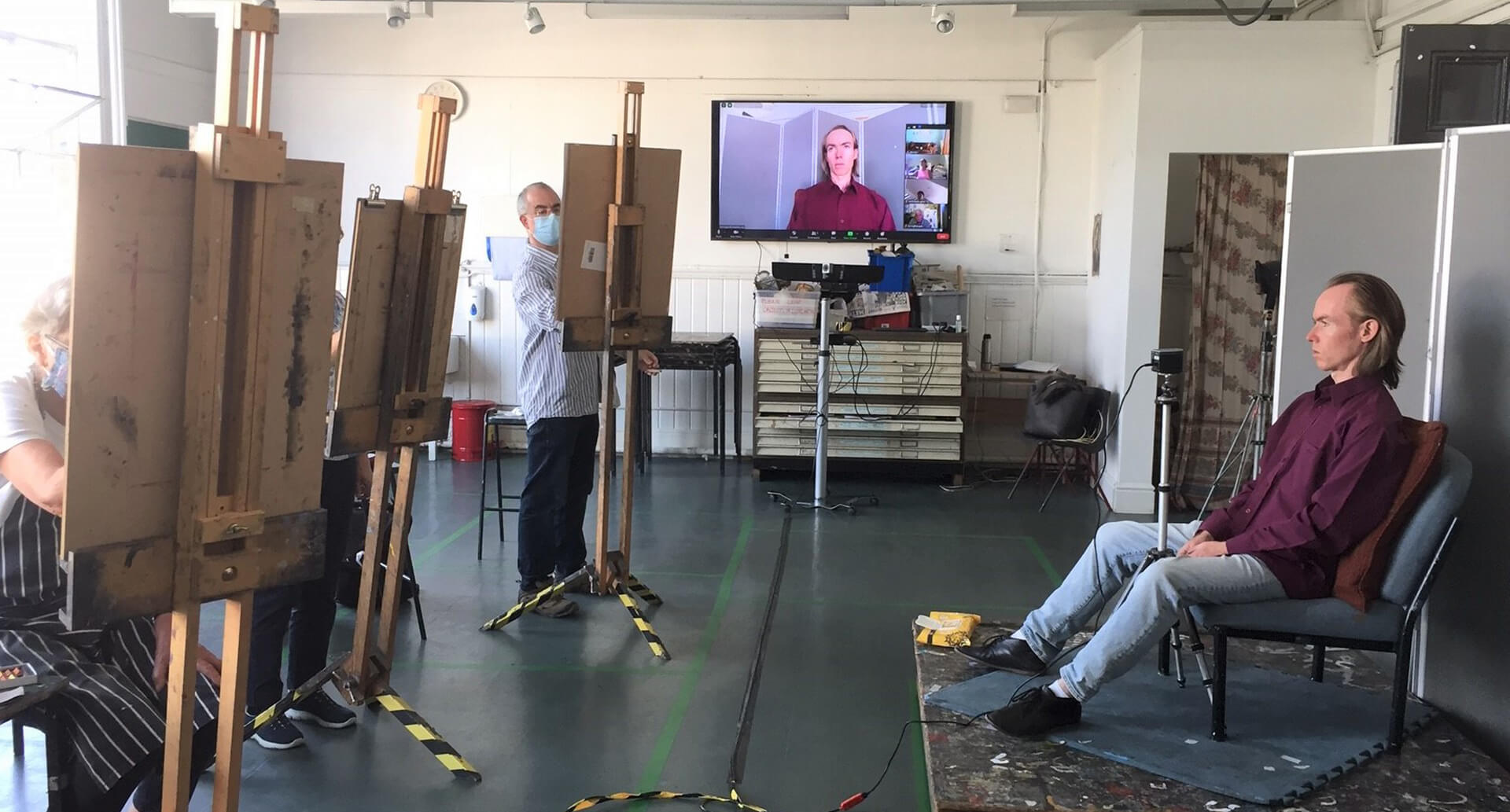Botanic Drawing & Painting (Beginners to Intermediate)
This is a course in Botanical Illustration is for the beginner to intermediate level Botanical illustrator students as well as continuing students of this course.
What The Course is About:
The course will continue with basic principles of drawing (using Graphite and Pen and Ink) and water colour painting as applicable and specific to Botanical illustration. Continuing students will benefit from picking up where we left off last semester. We will cover: 1. The botanical world through line, form and shading using graphite, ink and water colours. 2. Look at the basic forms that makes up the plant world (Leaves, flowers, fruits and nuts as well as bulbs, roots, corms and rhizomes) 3. We will explore these forms in the way light and shade wraps the surface and help define them in a way to make them appear more 3 dimensional as illustrations 4. We will cover basic but necessary botany to empower the student to draw with confidence 5. We will also look at layout and composition in the making of these illustrations. 6. We will also do line drawings and diagrams supporting botanical illustration 7. will progress to pen and ink drawing and where there is interest, explore this medium more fully 8. And finally, we will progress to water colour illustration of botanical subjects
Materials Required:
A notebook that can double up as a sketchbook. A5 to A4 in size and with a very smooth heavy-duty paper is best, but bring what you have and we will discuss. Only buy if you need to once you have discussed it with the tutor. Drawing paper: For a direct learning experience, plate finish Bristol Board 250gsm to 280gsm is best. A less durable and cheaper paper but with a very similar surface finish is bleed proof Layout paper 40 gsm to 70 gsm. A4 to A3 in pad size. It is not good enough for final art work but it offers a very good inexpensive smooth surface paper for practice and for a direct learning experience. Basic Artist quality (bonded) Graphite Pencils: H4, H2, H, F, HB, B2 are the only pencils you will need to start off with and possibly for the first 10 weeks. You may need to expand to a broader range during the course depending on your rate of skill acquisition OR at a later stage, but that is different for each individual. NB: Bring what you have and we will try it out and then identify what each of you need to buy extra to tap into a direct learning experience offered in this course. If you have to buy, please consider Derwent OR Faber Castel Artist Quality pencils or equivalent quality brands such as (but not limited to) Caran d'ache and STAEDTLER Mars Lumograph graphite pencils. A good quality and very sharp pencil sharpener. A kneadable eraser, (Faber Castel is best but by no means the only one out there) Continuing students may choose to work in Pen and Ink in which case in addition to the above, they will also need to acquire fine liner pens 0.05, 0.1, 0.3 and 0.5 in tip size. Recommended starter sets: Staedtler 4 Pigment Liner OR Sakura Pigma Micron Fineliners. Water Colour paper for those intending to work in Water Colour. Hot Pressed 300gsm paper is best. Minimum A3 size or nearest equivalent. Lighter weight smooth (HP) paper can be used if it is in pre-stretched pad format or individual papers pre-stretched and affixed to a stable board. We will not stretch paper in class. NOTE: Choose the best possible 100% Cotton paper and the whitest possible paper available for your budget. Paper graded NOT is in fact cold pressed and still has some surface texture and you may find this much more challenging to paint on. NOTE: You can draw/paint without magnification, but you will find finer detail more difficult without it and you will find drawing without it a strain on your eyes (Health warning). I recommend a good quality magnifier (x 6 to X 10 magnification as a base minimum but not restricted to this). It can be hand held, on a stand or as a table fixed gooseneck magnifier, but you will find that it reduces strain on your eyes and makes details that much more visible and drawable.
Previous Experience:
This is a course in Botanical Illustration is for the beginner to intermediate level Botanical illustrator and for continuing students of this course.
End of course:
What will I achieve? By the end of the course you will: 1. Understand line and shading in drawing. 2. Compose a drawing to illustrate a botanical specimen to desired outcome. 3. Become familiar with graphite as a medium as used in botanical illustration 4. Become familiar with pen and ink as a medium as used in botanical illustration 5. he continuing students can progress to water colours as a medium as used in botanical illustration 6. Can use the course to explore botanical illustration further in their own time
View all courses in Drawing & Painting,Watercolour, Gouache & Pastels
Starting May 2025
Class Code: 0525-12829
Price: £280.00
Location: On-Site
Tutor: Jaco Nel
From May 12th, 2025 to July 21st, 2025
Mon 10:00 - 13:00
- 12 May 2025 - 10:00 to 13:00
- 19 May 2025 - 10:00 to 13:00
- 2 Jun 2025 - 10:00 to 13:00
- 9 Jun 2025 - 10:00 to 13:00
- 16 Jun 2025 - 10:00 to 13:00
- 23 Jun 2025 - 10:00 to 13:00
- 30 Jun 2025 - 10:00 to 13:00
- 7 Jul 2025 - 10:00 to 13:00
- 14 Jul 2025 - 10:00 to 13:00
- 21 Jul 2025 - 10:00 to 13:00









